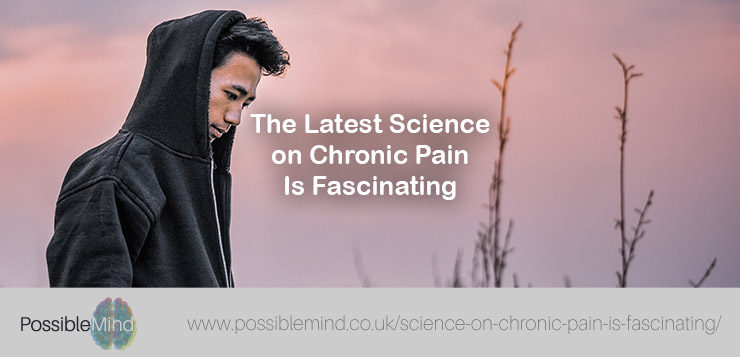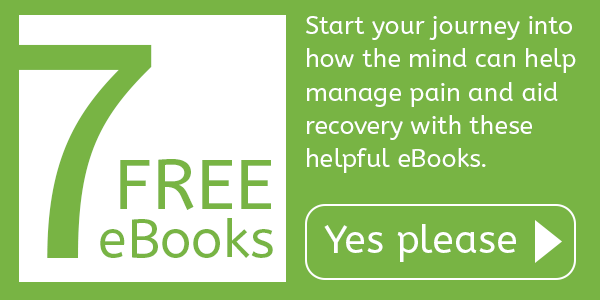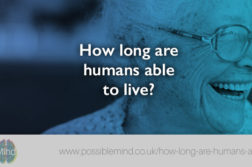Experts can even predict who’s likely to suffer or recover, based on brain structure and personality.
The mysteries of chronic pain have proven as frustrating and persistent as the suffering of some 50 million U.S. adults who deal with it. Caused by everything from injuries and strokes to arthritis and diabetes, and sometimes for no apparent reason at all, chronic pain affects 20% of the adult population, with 8% saying it frequently interferes with work and life.
While no comprehensive cures are in sight, the latest research reveals chronic pain is largely a mental and emotional construct, a phenomenon of perception rather than merely of biology, and one that can lock in and vex its victims for reasons science is finally starting to understand.
Researchers are putting together biological and psychological pieces of a pain puzzle that holds promise for targeted treatments that are tailored to specific types of pain, individual brain biology and even different personalities. Pain meds and surgeries are often no better at alleviating chronic pain than placebo pills and pretend surgeries, frustrating physicians and patients alike. Solutions may include new medications, but will almost surely also involve a range of promising alternative remedies, from acupuncture to exercise, diet to mindfulness.
Your brain on pain
Pain eludes a simple, useful definition, largely because it comes in so many forms and is so subjective. The International Association for the Study of Pain (IASP) calls it “an unpleasant sensory and emotional experience.” There are two main types:
Your brain on pain
Pain eludes a simple, useful definition, largely because it comes in so many forms and is so subjective. The International Association for the Study of Pain (IASP) calls it “an unpleasant sensory and emotional experience.” There are two main types:
- Acute pain, as from a cut, sprain, bruise or burn, is relatively easy to identify and treat.
- Chronic pain is characterized by pain that lasts beyond normal healing times, typically a few months, according to the IASP.
The sources and mechanisms of chronic pain are “dramatically different” from those of acute pain, say Vania Apkarian, PhD, who runs a pain clinic at Northwestern University’s Feinberg School of Medicine. For a long time, chronic pain was thought to be directly linked to injury or illness, yet scientists now know that only a small percentage of people with a given injury develop chronic pain, and not all chronic pain can be traced to injury or illness. So there must be other factors involved. “That’s been an enigma in the field,” Apkarian says.
In a fascinating series of studies, Apkarian and colleagues are learning that personality and brain structure, determined through questionnaires and brain scans, can predict a person’s susceptibility to developing chronic pain. “If I look inside the brains of people, I have a fairly good assessment of what is their risk to develop chronic pain,” Apkarian tells Elemental.
His research fingers the brain as the instigator and the governor of chronic pain, a finding with profound meaning for how pain should be treated.
The more pain you have, the more anxiety you have, the more pain you have, the more depression, the more catastrophizing, the more fear. All of those things sort of cluster together.
In an early study, reported in the journal Brain in 2016, Apkarian’s team followed 39 people who had injured their backs. The researchers used brain scans across three years to look for changes. What they found was startling.
The structure of the brain’s corticolimbic network, involved in memory and emotion, was different in people who developed chronic pain — before that pain developed. Further, people with a smaller hippocampus and amygdala, two parts of the brain related to stress, anxiety, and emotional learning, were also at greater risk of developing chronic pain. The results suggested “some intrinsic, genetically encoded brain property — and not the pain itself — led to chronic pain,” wrote Dr. Daniel Barron, a psychiatrist and neuroscientist at Yale University who was not involved in the research.
Pain can breed positivity
In their latest research project, Apkarian’s team studied 108 people with chronic back pain, using brain scans and questionnaires to develop what they describe as the first holistic look at how brain structure, personality, psychology, and socioeconomic status affect chronic pain. The findings, detailed in the journal PLoS Biology in August, reveal a complex interplay among all these factors in determining not just a person’s risk of developing chronic pain, but how they respond to it.
Other research has shown that fear, stress, anxiety, and depression all contribute to chronic pain, and that poor people suffer more, too. Also, people who catastrophize — overreacting to a painful stimulus — are at higher risk for developing chronic pain. Apkarian’s team confirmed all this. But they also found that having pain can lead to catastrophizing over your plight.
“In a way, you become a catastrophizer if you have more pain,” he says. And all these factors are highly interrelated. “The more pain you have, the more anxiety you have, the more pain you have, the more depression, the more catastrophizing, the more fear. All of those things sort of cluster together.”
The team’s most compelling discovery, however, is how people react differently to chronic pain. One might expect someone with never-ending aches to spiral into a sea of woe, depression, and inactivity. That can and does happen. But the study revealed that chronic pain ironically confers advantages to some people, fueling more positivity, openness, and extroversion, making them more likely to connect with others.
“For the first time, the study shows that the chronic-pain patient not only is suffering from chronic pain, but to compensate for that and cope with it, they actually develop lots of positive emotional and cognitive properties,” Apkarian says. “Their personality changes, in a positive direction. If only consumed with their pain, they would all commit suicide or not be able to survive. Instead, these people live. Yes they’re suffering, but they’re fighting the suffering.”
The study has one hole, Apkarian notes. Chronic pain sufferers who are optimistic may be more likely to volunteer for a study like this, whereas people who don’t cope well might tend to stay at home and never contribute to the dataset.
Nonetheless, the results point to specific ways of identifying personality and psychological risk factors that could inform and optimize treatments for chronic pain, but first the researchers need to gather data on more people. “We’re almost there,” Apkarian tells me.
Pain takes on a life of its own
Beyond the acute and chronic aspects, pain can be loosely lumped into three broad categories useful for study:
Nociceptive pain involves an injury or other stimulus to the skin, muscles, bones, joints, or organs. It’s the common pain you feel when you cut your thumb or pull a muscle. Nerves transmit pain signals to the brain, and everything is working as it should.
Inflammatory pain can be triggered by injury or illness. The body floods damaged tissue with immune cells in an effort to heal, and if things don’t go well — if other factors come into play — the inflammation can persist, leading to chronic pain.
Neuropathic pain involves damage to the nervous system itself, by such things as spinal cord injuries, traumatic brain injuries, and amputations, as well as stroke and diabetes. It is more complex to diagnose and treat.
“Neuropathic pain arises from the nervous system after an initial trauma has healed, or can appear with no injury at all,” explains Andrew Tan, PhD, associate director of the Center for Neuroscience and Regeneration Research at Yale University School of Medicine. The body has done its best to heal the trauma, “and yet the nervous system has changed somehow — there’s some abnormal plasticity happening, and that is what is driving the painful outcome.” Neuropathic pain is largely untreatable, he says, because there’s no specific body part or site to target.
Chronic pain, neuropathic, or inflammatory, exists on a spectrum and can be interrelated, explains Tan, who, in conjunction with VA Connecticut Healthcare System, focuses on chronic pain related to injuries common among veterans.
Just as Apkarian’s team showed with chronic low back pain, Tan’s research is finding that chronic neuropathic pain, while it may stem from an injury, takes on a life of its own. All pain, he explains, involves electrical impulses traveling through your nervous system, though the spinal cord and into the brain. That system is flexible, or plastic, Tan and his colleagues have shown in a series of studies. Neurons in the spinal cord and the brain can reorganize and make new connections, creating abnormal signals. “Pain is essentially sensory information gone wrong,” he says.
‘Pain is like a memory’
Tan’s theory considers how neuropathic pain and inflammatory pain might overlap. He thinks chronic inflammatory pain can lead to neuronal plasticity, when immune cells like microglia, which are related to inflammation, talk with neurons and cause them to change. It goes like this:
“After injury there is inflammation, the body is trying to heal itself, and inflammation is part of that healing process,” he explains. “You can also have the confounding complication that it can lead to abnormal neural plasticity. That abnormal neural plasticity becomes chronic, durable. I’m not going to say permanent, because I believe there is a possibility of reversal. But it becomes this persistent, structural anomaly that we’re trying to reverse now.”
Pain is like a memory. You’re locking in this information, long-term, hard-wired in.
While it’s a stretch to say “pain is all in your head,” among Tan’s most compelling lines of research is how the apparent path to hard-wired chronic pain may be related to conventional human memory. He studies dendritic spines, protrusions from neurons that, as the theory goes, make the synaptic connections between neurons and are part of the root of “locking in” pain signals in the spinal cord. “We found in our research that there is structural plasticity within the sensory system in the spinal cord. And this is how we think pain is locked in.” Meanwhile, scientists have long known dendritic spines are key to forming memories in the brain.
“Pain is like a memory,” Tan says. “You’re locking in this information, long-term, hard-wired in. There’s lots of literature suggesting pain and memory are related, biologically speaking.” In fact, he and colleagues actually call the phenomenon “neuropathic pain memory,” and he believes these memories are stored in both the brain and spinal cord. “We don’t know as much in the spinal cord, but evidence from our work and others in more recent years show that the spinal cord is also important in abnormal pain processing.”
Treatment options
Before looking at proven treatments that work, it’s worth looking at what doesn’t and what maybe does.
In efforts to find the sources of pain and block it, “pharmaceutical companies have spent billions and billions of dollars,” says Apkarian, the Northwestern University pain center researcher. “Nothing has come out of it for 30 years now.”
Aspirin and other anti-inflammatory drugs “are useful for acute pain,” Apkarian says. “Whether they do anything for chronic pain is highly questionable.” And all these pain relievers come with side effects, including an increased risk of bleeding in the digestive system.
Opioids, once seen as a wonder drug, can be highly effective on acute pain. But there’s a lack of evidence that they work on chronic pain, the CDC says, and the risks have become clear with the epidemic of overdose deaths. Health experts now say opioids — oxycodone, fentanyl, hydrocodone, and methadone — should be “used at the lowest dose possible, usually for just a few days.”
The latest rage for pain and, well, whatever ails you, is cannabidiol (CBD), an extract of cannabis that doesn’t get you high. Anecdotes aside, the scientific jury is still out on how and whether CBD might reduce pain and the extent of any side effects.
However, it would be no surprise that someone taking CBD, in whatever form and for whatever condition, finds that it works. It’s well established that if a person thinks a pill or other treatment will make them feel better, it probably will. Placebos, often in the form of sugar pills, have been shown to trigger the release of natural opioids in the brain, and they work as well as drugs in many cases (and not because of the sugar). The effect was once attributed solely to the power of positive thinking, but in recent years, scientists have realized there’s more to it, that it can work even when people know they’re being tricked.
Apkarian and his colleagues recently found that they can actually predict who will respond well to placebos. In a 2018 study in the journal Nature Communications, again using questionnaires and brain scans on people with chronic back pain, they found that placebo pills relieved the pain as well as drugs for half of people. More significant, the people who saw the biggest pain reduction from the placebos had different emotional brain components on the right and left sides, and they were more emotionally self-aware, sensitive to painful situations, and mindful of their environment.
“Their brain is already tuned to respond,” Apkarian says. “They have the appropriate psychology and biology that puts them in a cognitive state that as soon as you say, ‘this may make your pain better,’ their pain gets better.” And, he says, there’s no need to fool them. “You can tell them, ‘I’m giving you a drug that has no physiological effect but your brain will respond to it,’” he said. “You don’t need to hide it. There is a biology behind the placebo response.”
When the result of his newer research came in, showing that pain actually leads to positive thoughts in some people, Apkarian had an aha moment: “A person who’s brain structure creates positive thoughts and actions around pain is more likely to respond positively to a placebo,” he says. (On the flip-side of placebos are nocebos, which involve negative thinking. If a person doubts a treatment will lessen their pain, it is less likely to succeed, studies show.)
Physicians can leverage this knowledge and help create positive thoughts and a “socially transmitted placebo effect,” according to a recent study in the journal Nature Human Behavior. The idea is that a positive bedside manner — when the doctor believes in a treatment and communicates it through facial expressions — causes patients to experience less pain.
The placebo effect even works with surgery. And yes, scientists have actually cut into volunteers and performed sham operations, which skipped only the step that’s supposed to be therapeutic, then compared their outcomes to people who had the full-on real surgeries.
In a 2018 review of 25 such clinical trials, done between 1959 and 2013, researchers found “little evidence” that invasive surgery was more effective than sham procedures in reducing chronic pain. The various trials had evaluated operations like open surgery and arthroscopic treatments for back and knee pain, plus other surgeries like heart catheterization and laser treatments.
“Most people felt better after surgery,”says Dr. Wayne Jonas, clinical professor of family medicine at the Uniformed Services University and at Georgetown University School of Medicine. “However, so did those who got the sham surgery — and they improved at the same rate as those who received the real surgery. When putting all studies together, we found that over 85% of the reported improvement from surgery also occurred in the patients who underwent sham surgery.”
Proven treatments
Chronic pain is a “challenging issue and there is no single cure,” says Jonas, who is a former director of the National Institutes of Health Office of Alternative Medicine, adding that more non-drug approaches are needed. Meanwhile, many of the surgical procedures he studied are marketed without any rigorous study showing whether they work, he says. Adding to the problem, many people with chronic pain “are forced to jump from provider to provider, often undergoing unnecessary, costly, duplicative procedures, and taking drugs not indicated for chronic pain — with ultimately little relief.”
“Physicians and patients may want to instead consider other treatment options that are less invasive, but proven to be helpful for chronic pain management, such as massage therapy, yoga therapy, behavioral approaches, or acupuncture,” Jonas says.
There are three things almost anyone can do to lessen pain, according to the Mayo Clinic and several studies:
- Improve diet: “A lot of chronic pain is the result of chronic inflammation, and the evidence is quite strong that your diet can contribute to increased systemic inflammation,” says Dr. Fred Tabung, PhD, a visiting researcher with the Department of Nutrition at Harvard’s T.H. Chan School of Public Health. Eating more vegetables is one key to turning the tide: “A vegan or Mediterranean diet, or healthier eating inspired by these diets, can control insulin and cholesterol levels and reduce inflammation — which is the pain culprit,” says William Dr. Welches, a pain management specialist with the Cleveland Clinic. (Jonas, the Georgetown professor, offers a detailed guide to diet and pain management.)
- Sleep well: Lack of sleep fuels stress and anxiety, which are known to accentuate pain. But there’s a direct effect, too: When scientists deprived people of sleep and then applied “uncomfortable levels of heat” to their legs, the part of their brains that receives pain signals “amped up” and the part that releases feel-good dopamine ramped down. “Sleep loss not only amplifies the pain-sensing regions in the brain, but blocks the natural analgesia centers, too,” said study team member Matthew Walker of the University of California, Berkeley. The findings were detailed in early 2019 in the Journal of Neuroscience.
- Exercise: In addition to making you stronger and helping you sleep, exercise reduces stress, and stress is known to enhance the perception of pain. Weightlifting, intense aerobics, and even just walking briskly all spur the release of natural opioids that decrease pain. A small study published in October 2019 found that women who walked for 30 minutes, five days a week, felt an applied pressure — designed to simulate pain — 60% less than before the study started.
Promising alternatives
Several other non-pharmaceutical treatments have been studied, and increasingly, health experts say chronic pain interventions should involve a panoply of options designed to address both the biological and mental aspects of pain, fostering a positive feedback loop rather than a vicious cycle of pain, poor diet, lack of sleep, depression, and more pain.
- Acupuncture “appears to be a reasonable option for people with chronic pain to consider,” says the National Institutes of Health. In a review of 29 studies involving 18,000 people diagnosed with chronic neck, back, head, and knee pain, acupuncture “significantly” reduced pain more than a placebo when combined with anti-inflammatory drugs and physical therapy.
- Massage has been shown to reduce chronic pain by lowering physical and mental stress levels and, one line of thinking suggests, tamping down pain signals so they don’t actually reach the brain.
- Holding hands can help people feel less pain. Researchers found that when loved ones hold hands, their brain waves synchronize and they essentially share the pain, at least in theory.
- Psychotherapy or journaling can help a person deal with traumatic memories and repressed emotions, which otherwise fuel stress that can lead to chronic pain, the thinking goes.
- Laughter can be good medicine, with various studies suggesting it may help lessen pain.
- Hypnosis, a trancelike state said to heighten focus and concentration, may work much like meditation, proponents say. By using it to imagine a painful area as being comfortable, it may help reduce pain intensity.
- Yoga and tai chi combine physical movement and mindfulness, and both practices have been shown to lessen chronic pain levels in some people.
Be mindful of this
One of the go-to non-medicinal therapies for chronic pain has long been cognitive behavioral therapy (CBT), which involves multiple sessions with a therapist aimed at changing patterns of thinking and behavior by focusing on thoughts, beliefs, and attitudes. Mindfulness, an aspect of deep breathing, yoga, and tai chi, is emerging as a viable alternative to CBT, and can be done without professional help.
“Mindfulness is basically paying attention to the present moment without judging,” says Sara Lazar, PhD, an assistant professor of psychology at Harvard Medical School who studies the neuroscience of yoga and meditation. Mindfulness involves relaxing, focusing, and stepping back from mental habits to examine your own thoughts and habits as if from a third-person perspective.
While it might seem like mindfulness is about doing nothing, Lazar has shown that it changes peoples’ brains in positive ways. Mindfulness is “indeed effective for people with chronic pain,” she says. Research has returned mixed results on the ability of mindfulness to actually reduce pain. What it seems to do, at the very least, is lessen repetitive thinking and reaction to pain, and foster a sense of acceptance.
A study in the journal Evidence Based Mental Health, published in January 2019, looked at 21 papers on CBT and mindfulness and found “both significantly improved physical functioning and lessened pain severity and associated depression.”
Learning exactly how mindfulness and other alternative therapies work will require more study. But it won’t surprise Andrew Tan, the Yale researcher, if a lot of it ties back to his discoveries of the nervous system’s propensity to change and lock in chronic pain like a memory. “With mindfulness, you’re retraining your mind in how you perceive things,” he says. “Theoretically, if your nervous system changes structurally with training, it is possible that the resulting plasticity can modify your perception of pain.”
This article was written by Robert Roy Britt and was first published on elemental.medium.com on 16th December 2019.
If you like this post you will also enjoy:
- Like War, Illness and Pain are Not Bad.
- The Body Knows How To Heal Itself.
- Unlikely, but still possible.
- Mind Power and Belief for Recovery and Healing.
- How Athletes Recover Quicker Using Mind Power.
- The Healing Power of Illness Book Overview.
Further Reading:






